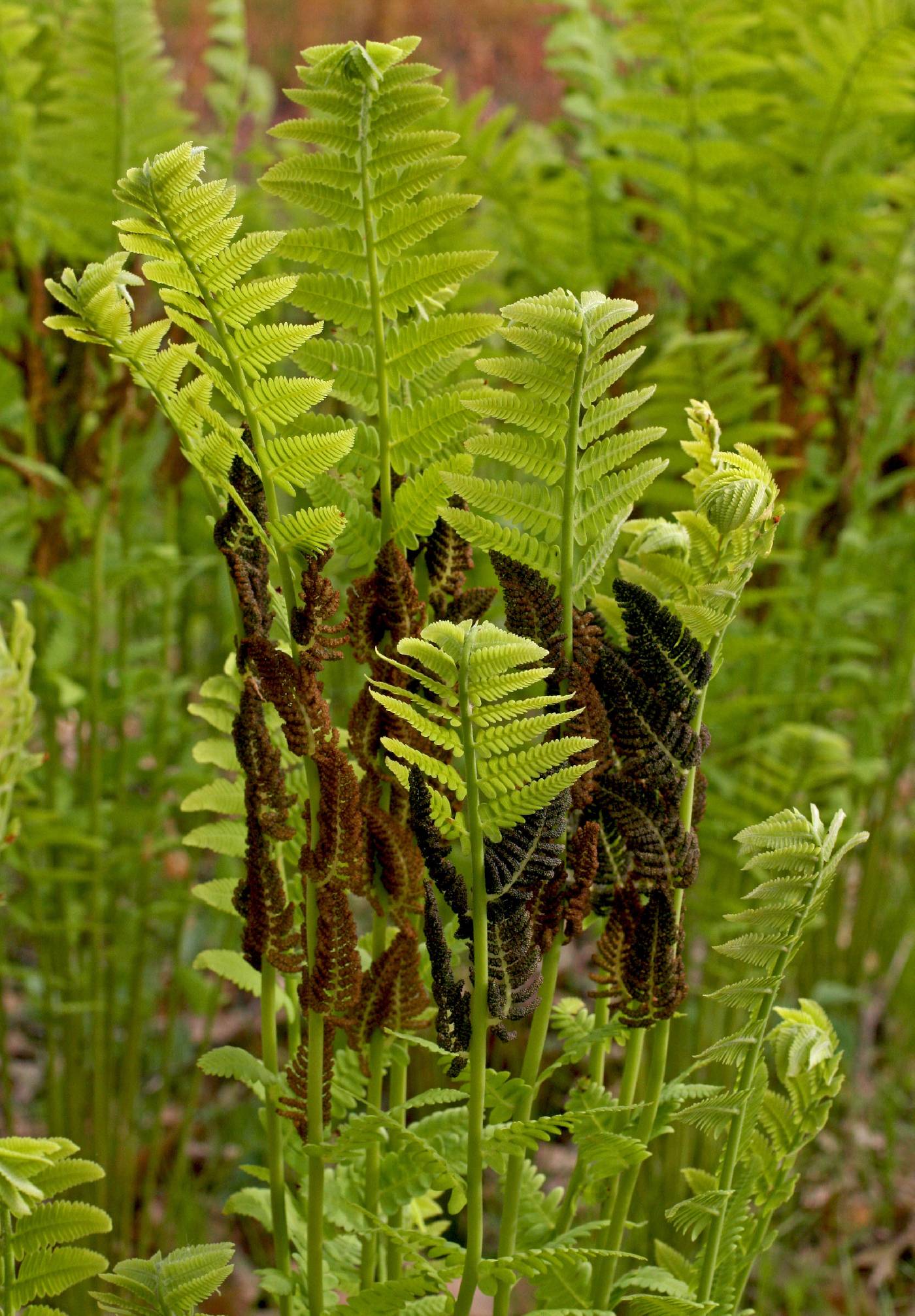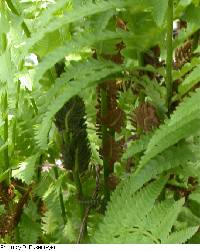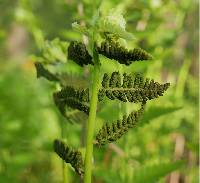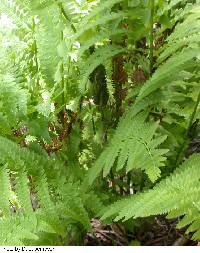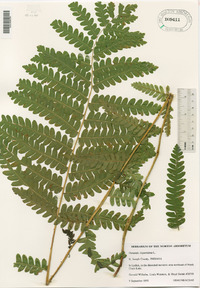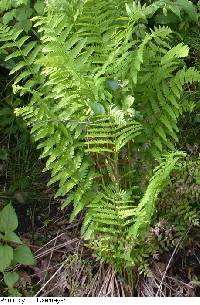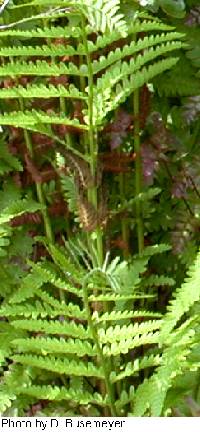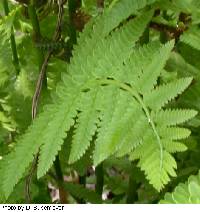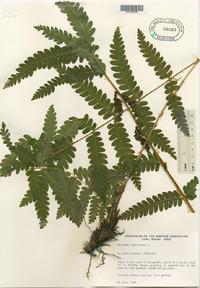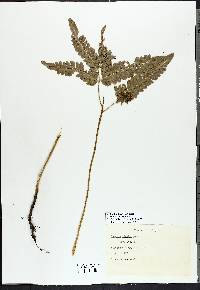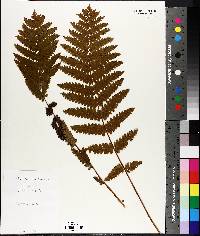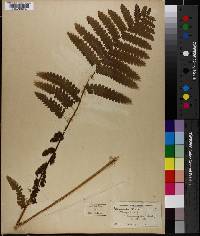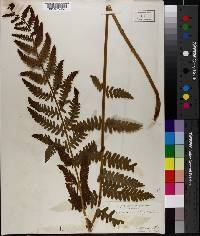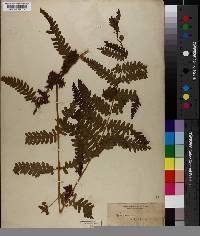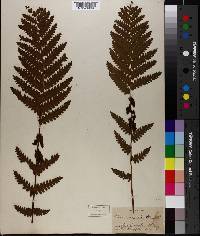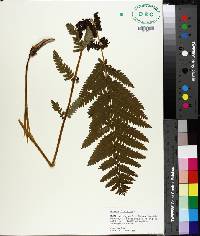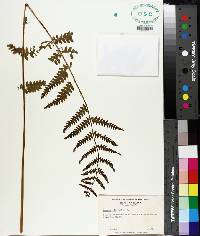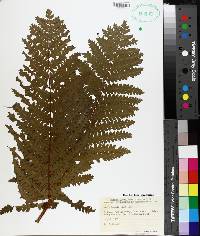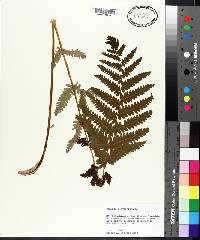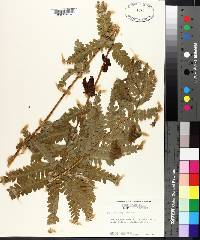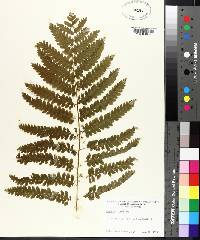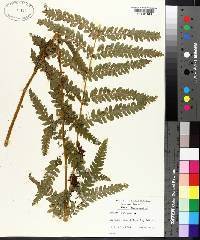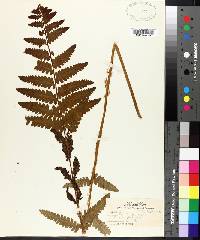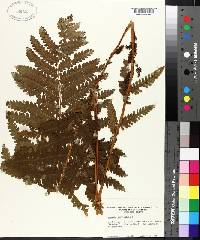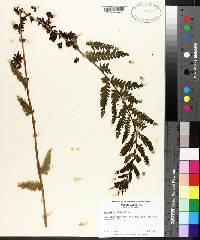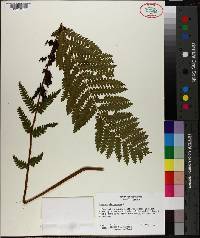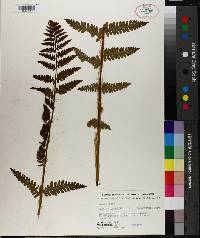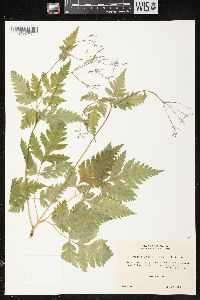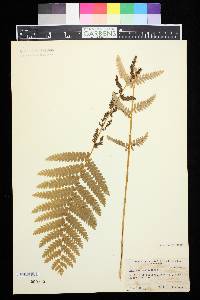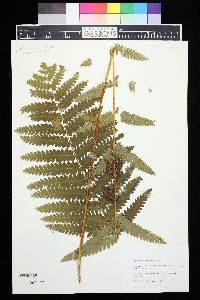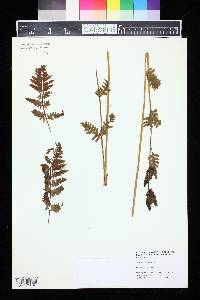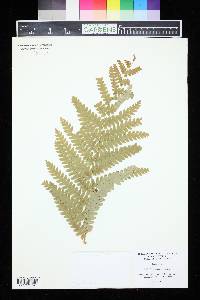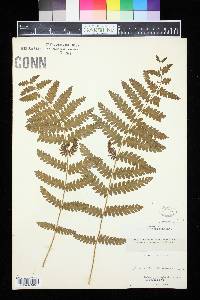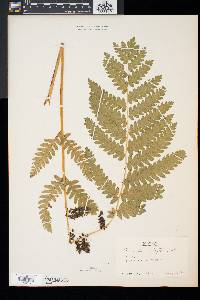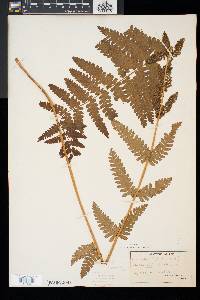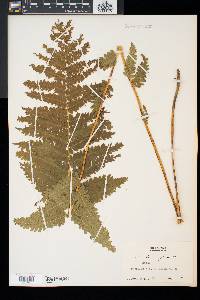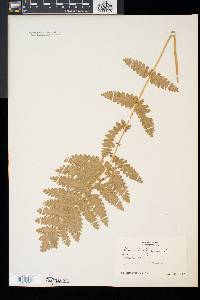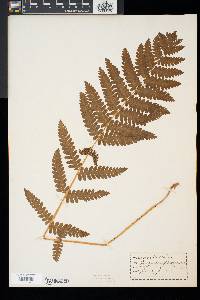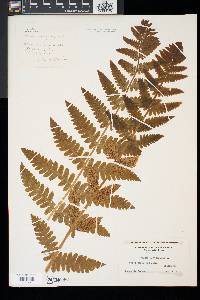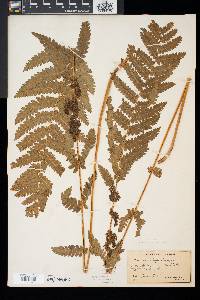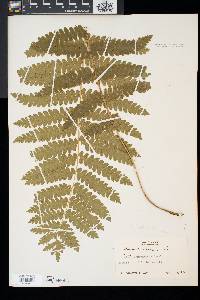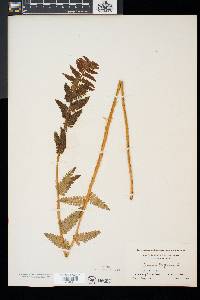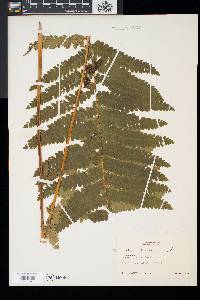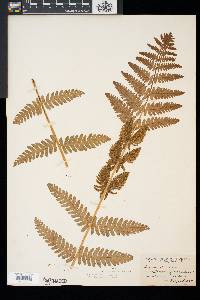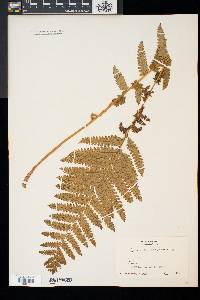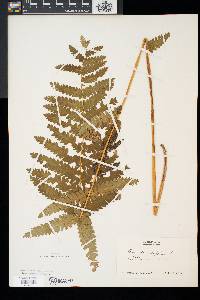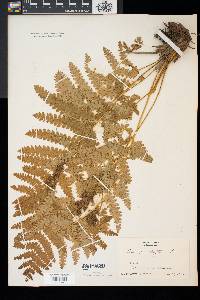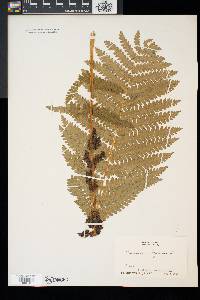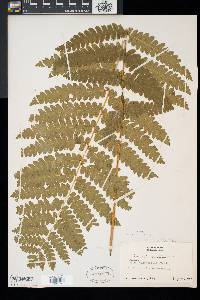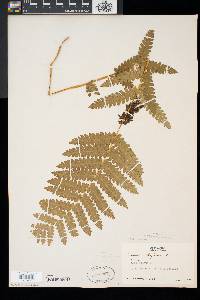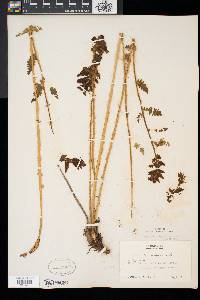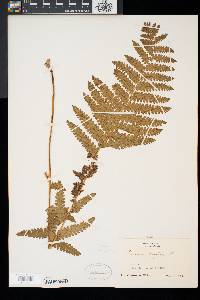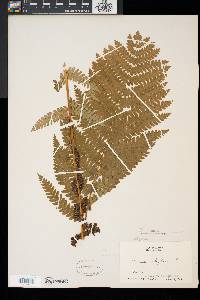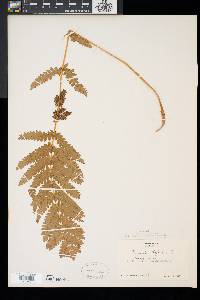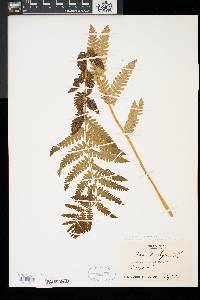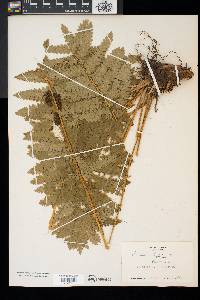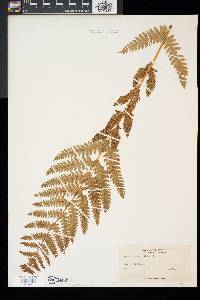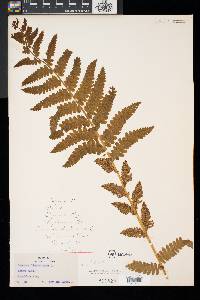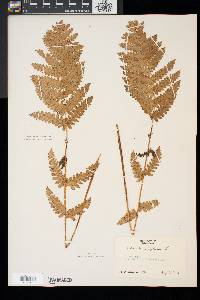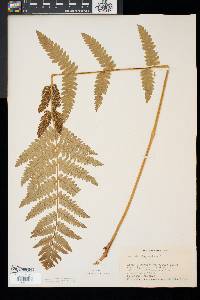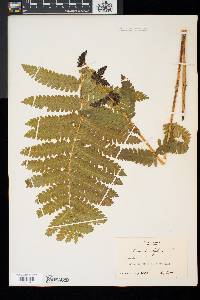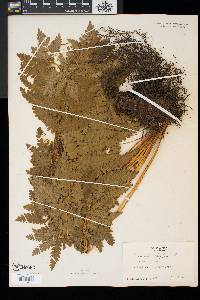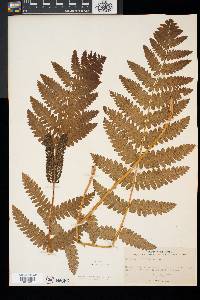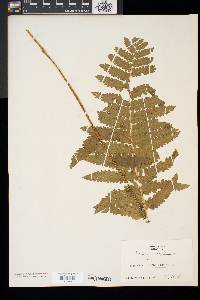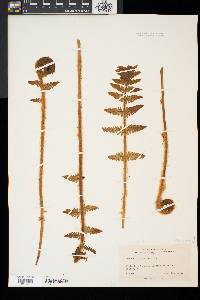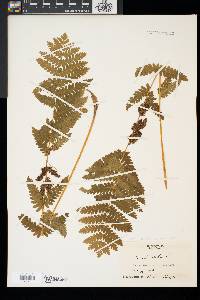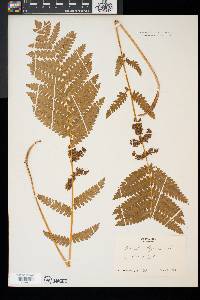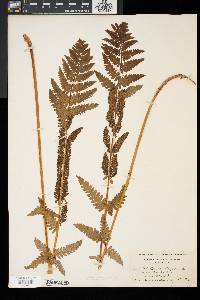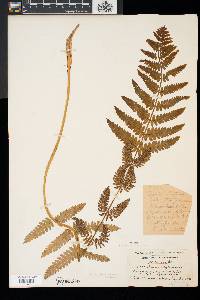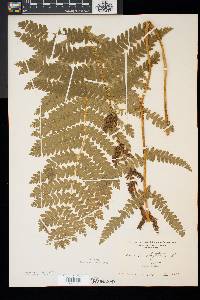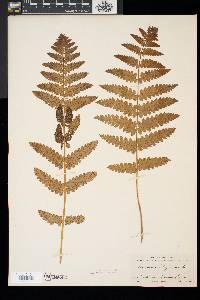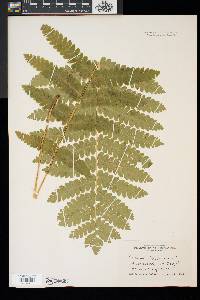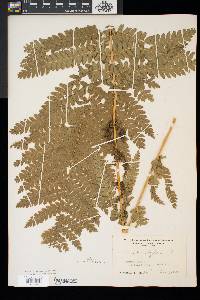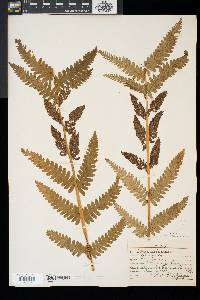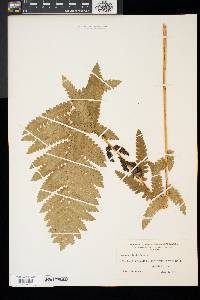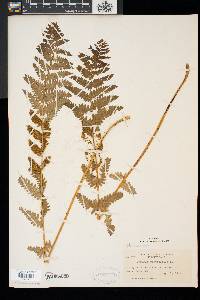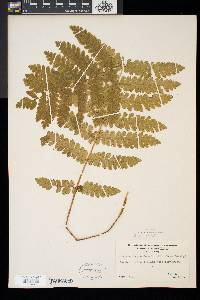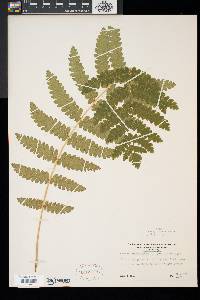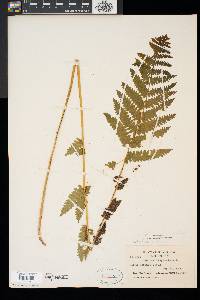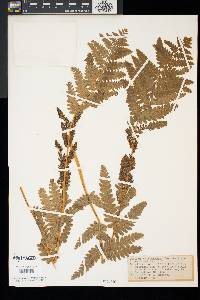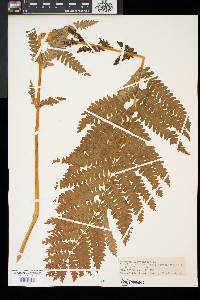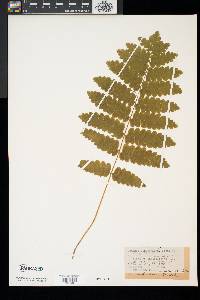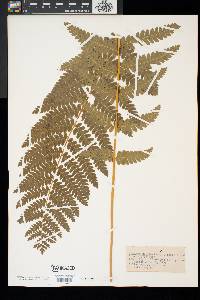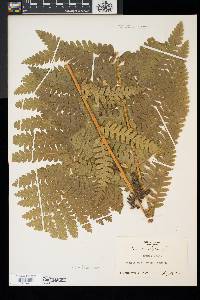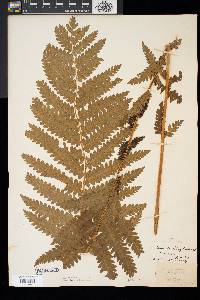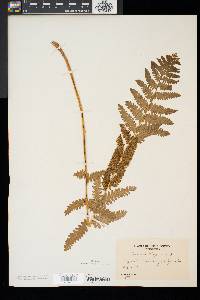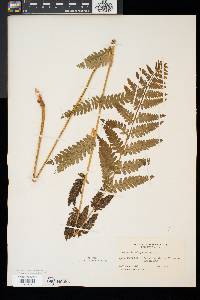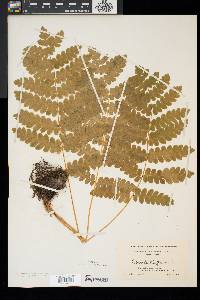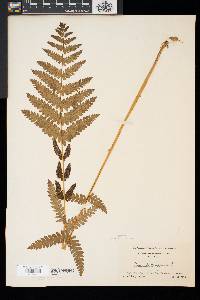Claytosmunda claytoniana
|
|
|
|
Family: Osmundaceae
Interrupted Fern
[Osmunda claytoniana L., moreOsmunda claytoniana var. claytoniana , Osmundastrum claytonianum] |
Leaves pinnate-pinnatifid; petioles ca. 1/3 length of blades, winged, with light brown hairs, becoming glabrate. Sterile leaves elliptic to oblong, ca. 0.5--1 m; pinnae broadly oblong, lacking persistent tuft of hairs at base; ultimate segments with base truncate, margins entire, apex rounded. Fertile leaves with greatly reduced, sporangia-bearing medial pinnae that wither early, giving appearance of no middle pinnae (hence the vernacular name, interrupted fern). Sporangia greenish, turning dark brown. 2 n =44. Sporulation early spring--midsummer; 0--2300 m; St. Pierre and Miquelon; Man., N.B., Nfld., N.S., Ont., P.E.I., Que.; Conn., Ill., Ind., Iowa, Ky., Maine, Md., Mass., Mich., Minn., Mo., N.H., N.J., N.Y., N.C., Ohio, Pa., R.I., Tenn., Vt., Va., W.Va., Wis.; Asia Osmunda claytoniana is sparingly cultivated as an ornamental.
Perennial fern 0.5 - 1.2 m tall Leaves: several, clustered, mostly erect, arising from the top of rhizome near ground level, and held on winged stalks covered with light brown hairs, which fall off with age. The leaf blades are pinnately compound with the segments (pinnae) further pinnately-lobed. Two kinds of leaves are produced: sterile and fertile. Rhizomes: frequently clumped, short-creeping with often partially erect tips, covered by remnant bases of old leaf stalks, and with black, fibrous roots. Spores: numerous, all alike, green, and contained in dark brown sacs (sporangia) on the fertile pinnae. The spores are released in late April and May, and give rise to the gametophyte (the sexual phase of the plant), which is small, green, inversely heart-shaped to elongate, and sits above the ground. Sterile leaves: several, mostly erect, stalked, dull blue-green, relatively soft, 0.5 - 1 m long, pinnately divided, but broadly oblong in outline with a blunt or abruptly pointed tip. Fertile leaves: one to several, surrounded by sterile leaves, erect, stalked, greenish, and almost hairless along central "stalk" (rachis). The blades are larger than the sterile leaves, and have both sterile and fertile pinnae intermixed (fertile pinnae in the middle of the blade), with the fertile pinnae withering early in the season (soon after the spores are released) so the fertile leaves look as though there are no pinnae in the middle. Similar species: Osmunda claytoniana is quite similar to O. cinnamomea, but that species has tufts of reddish hairs in the pinnae axils and along the pinnae base undersides. Further, the fertile leaves have no sterile sections, so sterile and fertile pinnae are never on the same leaf. If no fertile leaves are present however, the two species are incredibly similar, except O. cinnamomea tends to have more gradually tapering, long-pointed sterile leaves with the pinnae on those leaves similarly gradually narrowed with long pointed tips. The only other Osmunda in the Chicago Region, O. regalis var. spectabilis, is quite different since its leaves are pinnately compound two times. Habitat and ecology: Somewhat infrequent in the Chicago Region, usually in sloped woods near the moist bases of the slopes, but it also has been found in open ground in prairie remnants. Occurence in the Chicago region: native Notes: The common name for this species, Interrupted Fern, refers to the fertile fronds, which have brownish fertile pinnae interrupting the green, sterile pinnae. Author: The Field Museum Much like no. 2 [Osmunda cinnamomea L.]; lvs soft, dull blue-green, foreshortened and blunt at the tip, as also the individual pinnae; rachis soon glabrate; segments of the sterile pinnae slightly hairy but not ciliate; outer lvs usually sterile, the inner larger and with 1-5 pairs of fertile pinnae near the middle of the blade; fertile pinnae to 6 נ2 cm, much smaller than the vegetative ones above and below; sporangia dark brown; 2n=44. Open, moist woods and margins of swamps, in subacid or neutral soil; Nf. to Ont. and Minn., s. to Ga., Tenn., and Ark.; e. Asia. Ours is var. claytoniana. A hybrid with no.
1 is O. زuggii R. M. Tryon. Gleason, Henry A. & Cronquist, Arthur J. 1991. Manual of vascular plants of northeastern United States and adjacent Canada. lxxv + 910 pp. ©The New York Botanical Garden. All rights reserved. Used by permission. From Flora of Indiana (1940) by Charles C. Deam Infrequent to local throughout the greater part of the state. Besides the counties shown on the map, there are reports from thirteen additional counties. It seems to prefer the moist bases of black and white oak slopes. In the southern part of the state it is found on the slopes of deep, wooded ravines. …… Indiana Coefficient of Conservatism: C = 8 Wetland Indicator Status: FAC |
|
|
|

